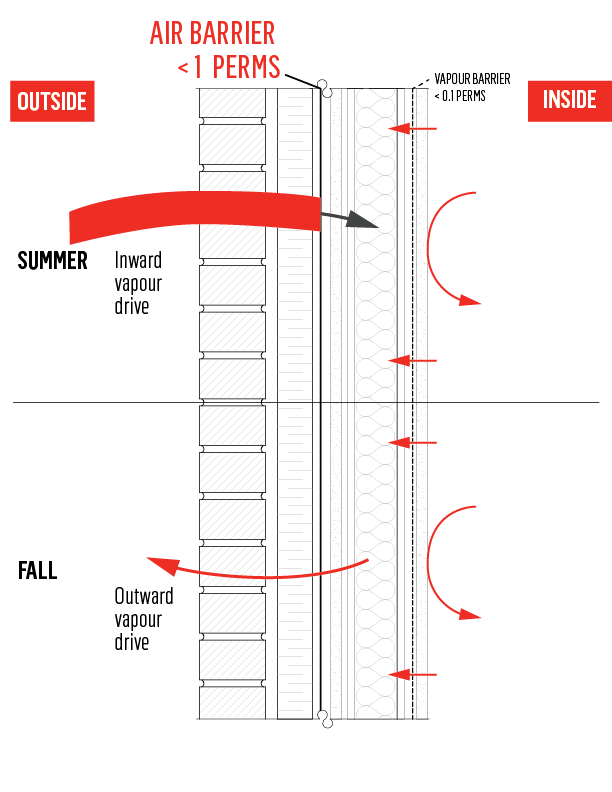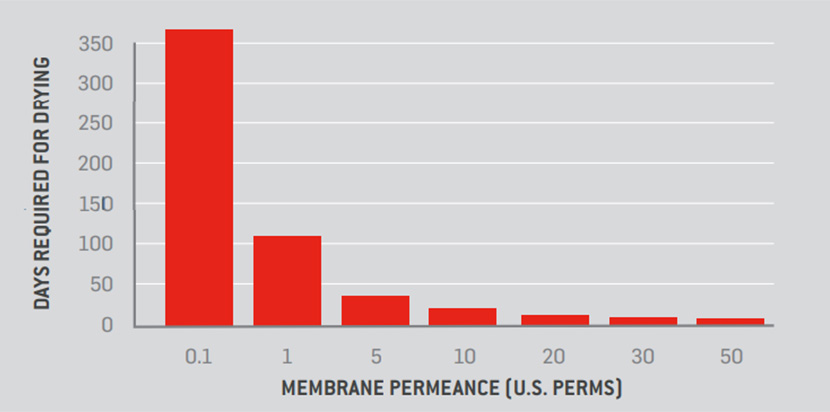Choosing the Right Permeable Air Barrier

Several factors must be taken into account when selecting an air barrier for a wall assembly. The main purpose of an air barrier is to prevent air leakage through the building envelope. Uncontrolled air circulation can cause heat loss and high resultant energy costs, not to mention increase the risks of condensation and mold growth in the assembly.
Various types of air barriers for various needs
Irrespective of their air leakage rate, permeable air barriers are categorized according to their water vapor permeability. The degree to which water vapor passes through a wall is specific to each type of air barrier. The diagrams below show the effects of water vapor diffusion, per type of air barrier, for hot summer weather and cold autumn temperatures. The more permeable an air barrier, the more it allows water vapor diffusion in the assembly.

Drying time of a wall
Water vapor permeability of materials used in an exterior wall assembly has an impact on the drying time of the assembly. Based on hygrothermal simulations, this graph demonstrates the influence of air barrier permeability on the drying time of a wall.

Increasing membrane permeability above 10 perm only provides marginal benefits to drying. Simulations illustrated* above demonstrate that the drying time of a wall is only 12 days faster when permeability is increased from 10 perm to 50 perm. In other words, a membrane that is five times more permeable will not allow the wall to dry five times faster. However, a 50 perm membrane will allow faster moisture accumulation inside the assembly through inward vapor drive, thereby increasing risk of condensation.
In addition, the drying dynamics of any wall assembly will be dictated by the material that has the lowest water vapor permeability. Consequently, the potential benefits of a highly permeable air barrier will often be mitigated by another material that determines the assembly’s drying time.
Good adhesion is critical
Among the permeable air barrier lines available on the market, prefabricated self-adhesive membranes have varied adhesive properties. An effective permeable air barrier must readily adhere to most building surfaces. The REDZONE STICK VP permeable air barrier membrane meets and exceeds this basic specification. In fact, it stands out from the competition thanks to its unmatched adhesive qualities. Moreover, no primer is required for its installation.
Conclusion: How to choose an air barrier?
Several criteria must be considered when selecting an air barrier. In addition to the above-mentioned criteria, other factors must also be taken into account, including the following:
- UV resistance
- Insulation present in the cavity
- Insulation present outside of the envelope
- Water storage capacity of the sheathing
All of these factors complicate the drying of a damp wall. Consequently, it is essential to select a membrane not only according to its permeability, but by considering the type of wall in which the membrane will be installed.